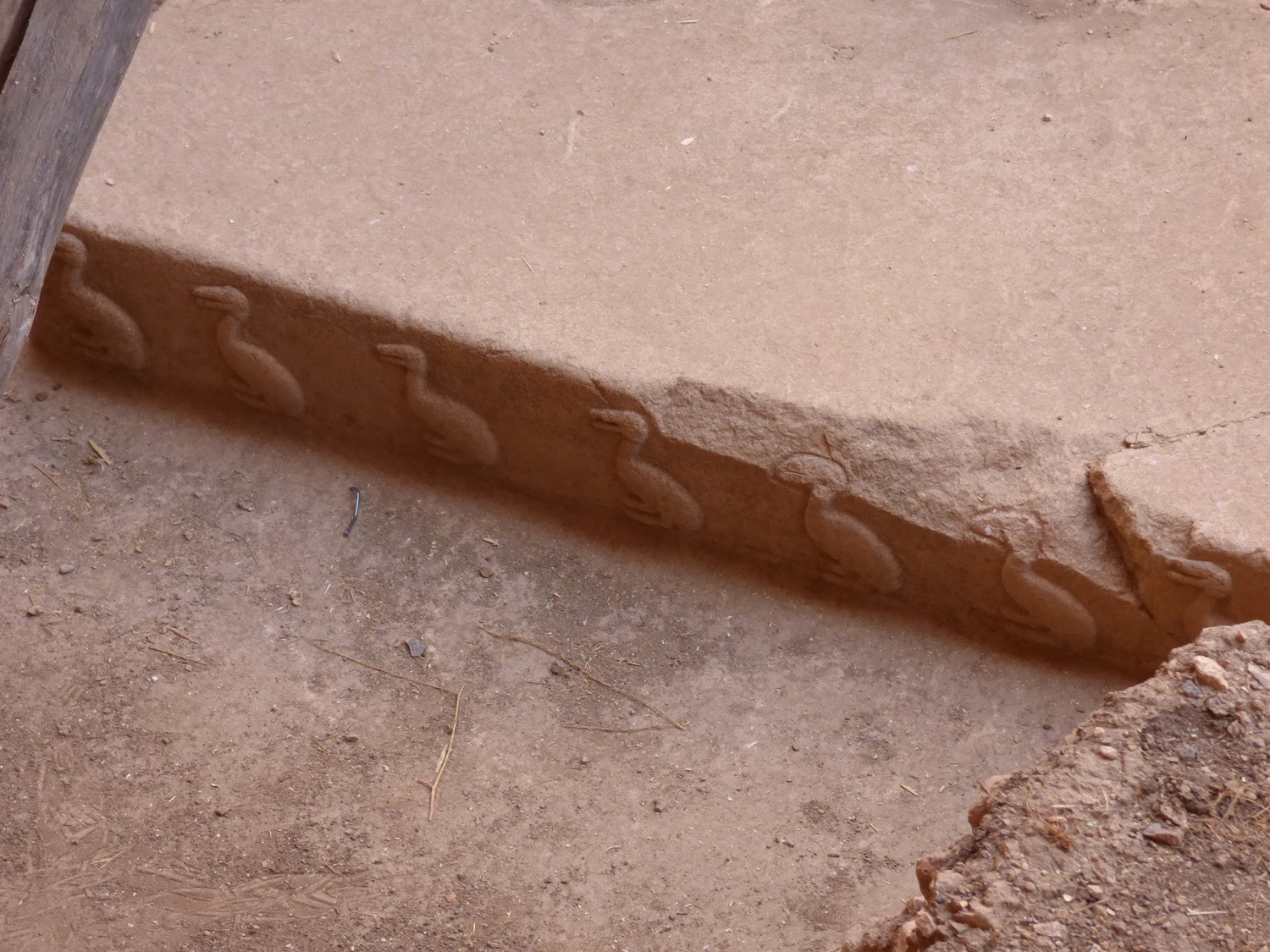Gobeklitepe is a 14,000-year-old ritual or religious center on the highest hill around (name means “potbelly hill”). We met the German archaeologist who's been in charge of the dig since 1994 briefly as he was taking an Italian group around, something that never would have happened but for Ulaş, who knew him slightly. He's the chap in the green shirt and the white headcloth:
We’d met a German couple traveling in a camper in the parking lot who’d come to see the site and meet him; they’d been told he was not there, which I’m sure is the standing instruction, so were disappointed.
They are building a heavy wooden roof over the site to protect it from the winter rains, so it was a little difficult to see things properly (I recommend the Wikipedia article for some photos that give you a clearer idea of the site: Gobeklitepe), but still an amazing place, especially for people with only stone tools, quarrying the rock from two kilometers away. Many stele are carved with abstract designs, or birds, foxes, ducks, boar, etc. Tall T-shaped menhirs, some 18 feet tall, are abstracted human figures 3-5 meters high, surrounded by 12 smaller ones in concentric outer ring, circular, spiral or elliptical - fascinating and very reminiscent of the design of Stonehenge.
Crocodile and birds are carved into the stone on the right:
You can sort of see the stele in a circle below, despite all the supports for the winter roof:
More birds:
One of the larger stele; these are stylized human figures - notice the fingers on the hands coming around the sides above the belt hung with some kind of animal pelt on this one:
Disney ducks parading around the base of the stele:
A photo from one of the signboards showing an aerial view of the excavation. There are at least twenty of these circular enclosures around this site, only a few of which have begun being excavated. It appears that this was a purely ritualistic site, as there's no sign of any dwellings or other structures in the area, built by nomadic hunter-gatherer people and probably serving a religious or spiritual purpose.
Interestingly, the entire site was deliberately covered over by the people who built it about 800 BC, immeasurably improving its chances of preservation. If you want to read more, National Geographic magazine had an article on the site a couple of years back: National Geo article Their photos, of course, beat the socks off anything I could take and they had access to things we weren't able to see, not to mention building a scale model of the place!
We’d met a German couple traveling in a camper in the parking lot who’d come to see the site and meet him; they’d been told he was not there, which I’m sure is the standing instruction, so were disappointed.
They are building a heavy wooden roof over the site to protect it from the winter rains, so it was a little difficult to see things properly (I recommend the Wikipedia article for some photos that give you a clearer idea of the site: Gobeklitepe), but still an amazing place, especially for people with only stone tools, quarrying the rock from two kilometers away. Many stele are carved with abstract designs, or birds, foxes, ducks, boar, etc. Tall T-shaped menhirs, some 18 feet tall, are abstracted human figures 3-5 meters high, surrounded by 12 smaller ones in concentric outer ring, circular, spiral or elliptical - fascinating and very reminiscent of the design of Stonehenge.
Crocodile and birds are carved into the stone on the right:
You can sort of see the stele in a circle below, despite all the supports for the winter roof:
More birds:
Disney ducks parading around the base of the stele:
A photo from one of the signboards showing an aerial view of the excavation. There are at least twenty of these circular enclosures around this site, only a few of which have begun being excavated. It appears that this was a purely ritualistic site, as there's no sign of any dwellings or other structures in the area, built by nomadic hunter-gatherer people and probably serving a religious or spiritual purpose.
Interestingly, the entire site was deliberately covered over by the people who built it about 800 BC, immeasurably improving its chances of preservation. If you want to read more, National Geographic magazine had an article on the site a couple of years back: National Geo article Their photos, of course, beat the socks off anything I could take and they had access to things we weren't able to see, not to mention building a scale model of the place!









No comments:
Post a Comment